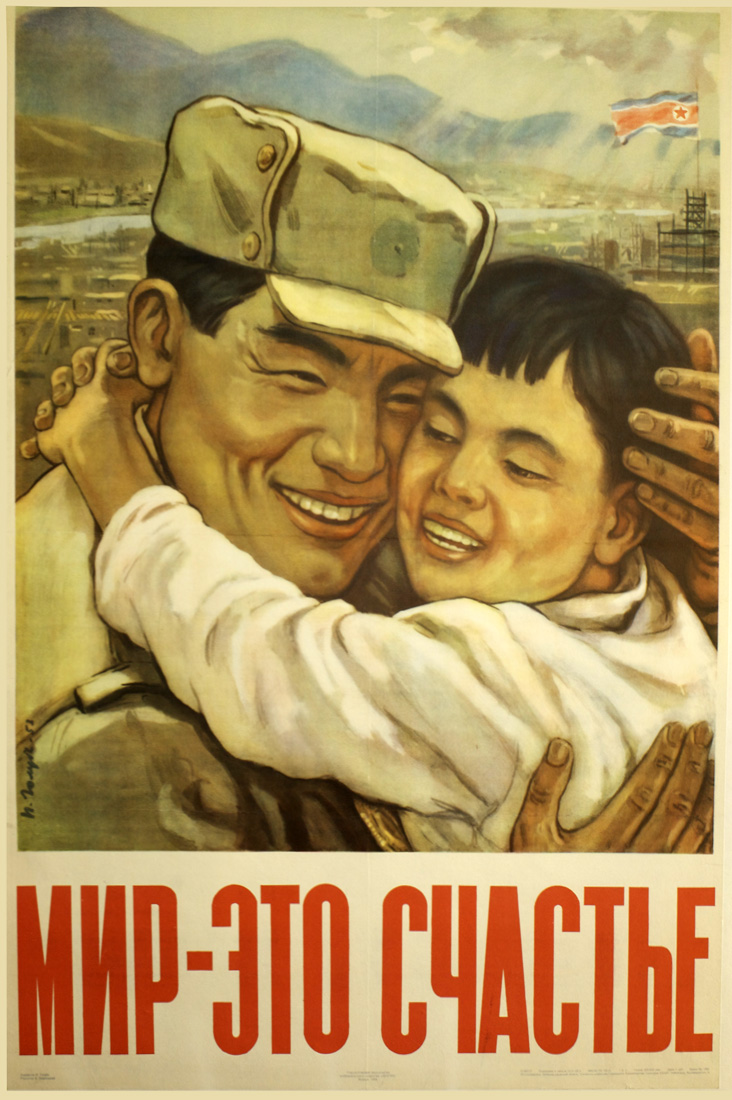
Peace -- That is Happiness
Poster Number: PP 192
Category: Cold War
Poster Notes: Soldier illustrated on this poster has shed his South Korean cap badge.
Media Size: 35.5x26
Poster Type: Offset
Publishing Date: 1953
Editorial Information: Editor E. Povolotskaia
Technical Information on Poster: Izogiz Publication No. 10549; Approved for printing September 14, 53; Volume 1 sheet of paper; Order No. 1382; Price 1 ruble
Print Run: 200,000
Glavlit Directory Number: A-06070
Catalog Notes: PP 192 Cold War b
Artist: Golub’, Petr Semenovich — Голубь, Петр Семенович
Petr Golub' attended the Moscow Institute of Fine Arts and graduated in 1938. His final work there was a large painting executed in gouache, The Dance of the Collective Farm Workers. Upon graduation, he permanently settled in Moscow. In 1944, he began to professionally participate in exhibitions; the first of such took place in Orenburg. He worked mainly as a poster artist but contributed illustrations as well to the journal Ogonek [Flame] (1947-1948) and he also produced ...
Read More About This Artist
Printer: Leningrad Offset Printing Plant — Ленинградское Офсетная типография
The Leningrad Offset Printing Plant was located near Kronverkskaia and Mir Streets in Leningrad (St. Petersburg). Historically, the printer had roots in Imperial Russia as a large operation founded in 1881 by Theodore Kibbel (Fedor Fyodorovich Kibbel') until it was nationalized by the Soviets in 1917. After its initial nationalization, the printer's management (via a series of government-controlled printing trusts) and its name both changed over the decades until it ultimately became the Leningrad Offset Printing Plant ...
Read More About This Printer
Publisher: IzoGiz (State Publishing House of Fine Art), Moscow — Изогиз (Государственное издательство изобразительного искусства), Москва
The history of IzoGiz begins with the formation of Ogiz, the Association of the State Book and Magazine Publishers. In 1930, the Sovnarkom of the Russian Socialist Federative Soviet Republic established Ogiz to centralize publishing under a monopoly in order to eliminate duplication of printed material, to streamline and control publishing production and its output, and to create a base for marketing books, training and technical manuals. In 1931, the Central Committee of the USSR ordered certain ...
Read More About This Publisher